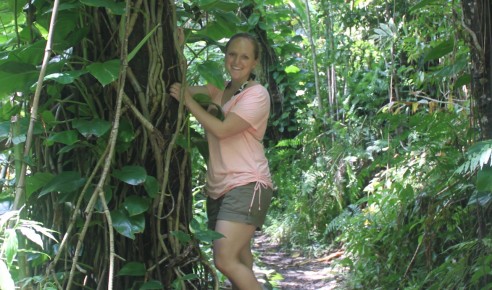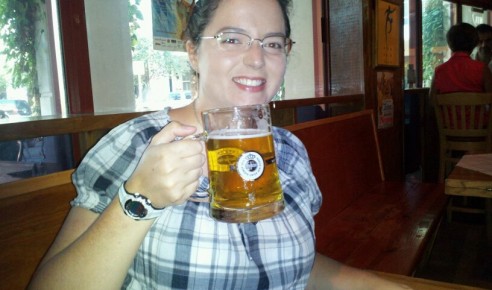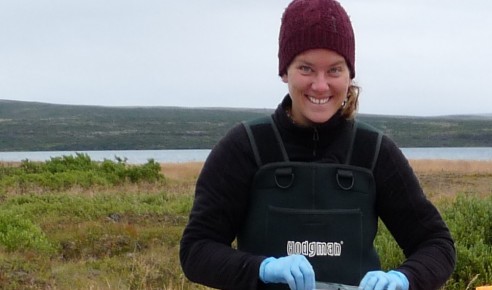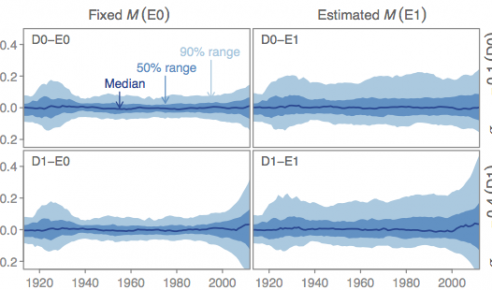Author Archives: Kelli Johnson
Advances in ageing techniques and age interpretation for U.S. West Coast groundfish
Owen Hamel1, Melissa Haltuch1, and Jason Cope1
1Northwest Fisheries Science Center
October 28, 2014
Because growth patterns of many west coast groundfishes limit the informational value of length data, fish ages are very important inputs to our age-structured stock assessments. At the Northwest Fisheries Science Center, we conduct a variety of ageing studies, and we review three recent avenues of research: age validation, alternative ageing methods, and understanding ageing error. Age validation: We developed the first bomb radiocarbon reference chronology for the California Current, using known-age petrale sole (Eopsetta jordani). Petrale sole spend a substantial portion of their first year of life in areas subject to variable upwelling. This variable environment illustrates the importance of using reference curves for age validation that are region- and species-specific, whenever possible. Alternative ageing methods: Traditional age-reading methods are time-consuming for long-lived species. Based on initial success with two groundfishes, we explore the use of otolith weights for rapid age determination of long-lived groundfishes. We also explore the consistency of these relationships over time and space. Ageing error: The Pacific hake (Merluccius productus) stock is characterized by infrequent, strong year-classes, surrounded by average and below-average cohorts. Ageing is conducted annually, such that readers routinely know the year of collection. Ageing error is typically assumed to be largely consistent across years in stock assessments, however, we hypothesized that readers are more likely to assign uncertain hake reads to predominant ages. We conducted a double-blind study wherein previously read otoliths from many years were reread without readers knowing the collection year. Results confirmed that strong year classes experienced less effective ageing error in the regular course of ageing otoliths. Accounting for this tendency improved model fits to age data. Each of these research avenues has improved our understanding and is enabling us to develop more reliable population models and management guidance.
Elizabeth Councill
Past Postdoctoral Fellow
Kotaro Ono
Past Postdoctoral Fellow
Geostatistical delta-generalized linear mixed models improve precision for estimated abundance indices for West Coast groundfishes
James T. Thorson1, Andrew O. Shelton1, Eric J. Ward1, and Hans Skaug2
1Northwest Fisheries Science Center and 2University of Bergen
October 14, 2014
Indices of abundance are the bedrock for stock assessments or empirical management procedures used to manage fishery catches for fish populations worldwide, and are generally obtained by processing catch-rate data. Recent research suggests that geostatistical models can explain a substantial portion of variability in catch rates via the location of samples (i.e., whether located in high- or low-density habitats), and thus use available catch-rate data more efficiently than conventional “design-based” or stratified estimators. However, the generality of this conclusion is currently unknown because geostatistical models are computationally challenging to simulation-test and have not previously been evaluated using multiple species. We develop a new maximum likelihood estimator for geostatistical index standardization, which uses recent improvements in estimation for random fields. We apply the model to data for 28 groundfish species off the U.S. West Coast and compare results to a previous “stratified” index standardization model, which accounts for spatial variation using post-stratification of available data. This demonstrates that the stratified model generates a relative index with 60% larger estimation intervals than the geostatistical model. We also apply both models to simulated data and demonstrate (1) that the geostatistical model has well-calibrated confidence intervals (they include the “true” value at approximately the nominal rate), (2) that neither model on average under- or overestimates changes in abundance, and (3) that the geostatistical model has on average 20% lower estimation errors than a stratified model. We therefore conclude that the geostatistical model uses survey data more efficiently than the stratified model, and therefore provides a more cost-efficient treatment for historical and ongoing fish sampling data.





